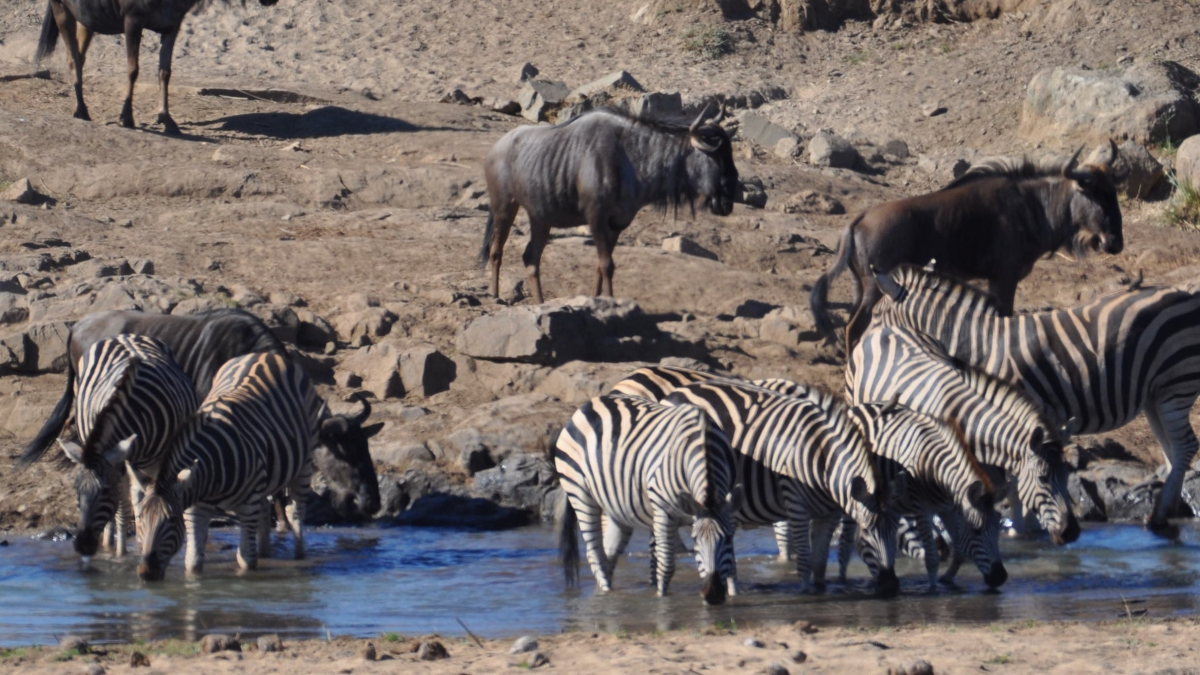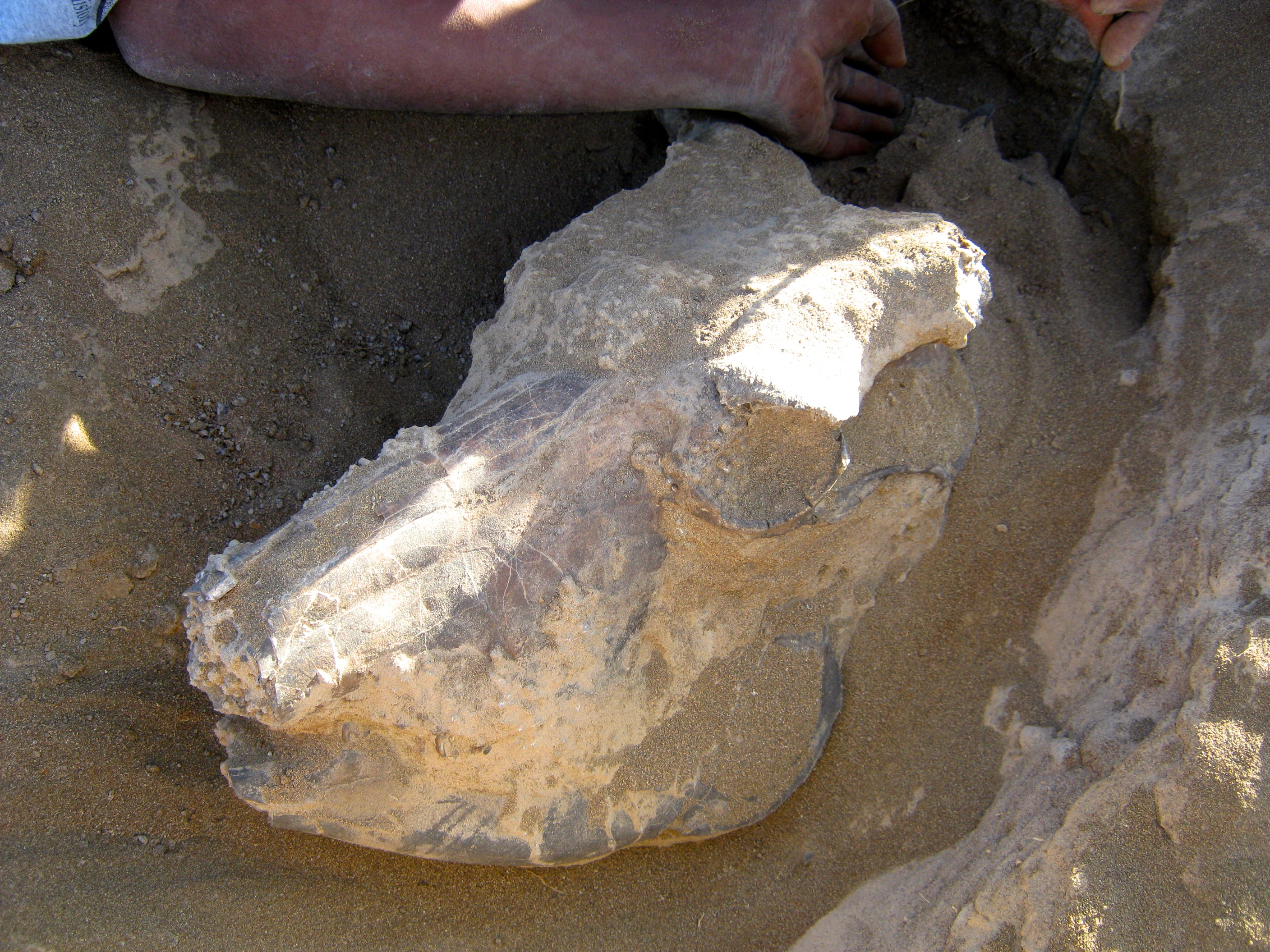Arizona State University researchers have contributed to a study that offers the first comprehensive assessment of what was going on in the world when the genus that includes modern humans first evolved.
The work builds upon a landmark 2013 finding, when an ASU research team found a 2.8 million-year-old jawbone with teeth in a valley in East Africa, representing the oldest known evidence of the genus Homo.
The discovery was 400,000 years older than previously known fossils, and it prompted researchers to turn their attention to reconstructing Ledi-Geraru in Ethiopia’s lower Awash Valley to understand two key questions: Why there? And why then?
To recreate the environment from millions of years ago, paleoanthropologists used animal fossils like proxy time machines. If the fossils indicate browsing on tree leaves, the way giraffes and monkeys do, then researchers know the landscape was characterized by woody trees and significant rainfall. If the fossils suggest animals grazed on grass, researchers would conclude they lived in open plains.
Scientists have long suggested that global cooling and the spread of grassy environments helped lead to the beginnings of the Homo genus.
“A growing body of evidence has hinted at this connection,” said Joshua Robinson, postdoctoral researcher with the Institute of Human Origins, “but, until now, we had no direct environmental data for the origins of Homo now that it’s been pushed back in time.”
Following the discovery of the Ledi-Geraru jaw, an intensive environmental study of the eastern African Plio-Pleistocene — from around 3.5 million years ago to 1 million years ago — was conducted in order to investigate these long-standing hypotheses.
The new study — coauthored by ASU researchers Robinson, John Rowan, Christopher Campisano and Kaye Reed with University of South Florida researcher Jonathan Wynn, in the journal Nature Ecology and Evolution — offers the first comprehensive assessment of the ecological contexts of the transition from Australopithecus (one of the longest-lived and best-known early human species, exemplified by the fossil collection known as Lucy) to Homo.
The time period around 2.8 million years ago is particularly important for the human fossil record of East Africa. About 18 miles west of Ledi-Geraru is Hadar, where the famous “Lucy” fossil of Australopithecus afarensis was found in 1974 by ASU professor Donald Johanson and dated to 3.2 million years ago. The geological sequence at Hadar, however, ends around 2.95 million years ago and is thus missing the important transitional period between the end of Australopithecus and earliest Homo.
Using stable isotopes of fossil teeth, the researchers found that early Homo at Ledi-Geraru was indeed associated with open and arid grassy environments. Results show that almost all animals found with early Homo at Ledi-Geraru fed on grass, including some that consumed substantial amounts of tree leaves prior to 2.8 million years ago. The diet of early Homo at Ledi-Geraru, however, appears to be indistinguishable from that of the earlier Australopithecus, implying that a change in diet is not a characteristic of the origins of Homo.
This wildebeest fossil skull was excavated at the Ledi-Geraru research site in Ethiopia. Photo by Josh Robinson
“We weren’t necessarily surprised that the diet of early Homo was similar to Australopithecus,” said Campisano, research associate with the Institute of Human Origins and associate professor in the School of Human Evolution and Social Change. “But we were surprised that its diet didn’t change when those of all the other animals on the landscape did.”
Placing Ledi-Geraru in a regional context indicates that eastern Africa environments at this time were not homogeneous. The ecology of the lower Awash Valley shifted from a wet and wooded environment at the time of the disappearance of Australopithecus around 3 million years ago to a dry and open landscape at the time of early Homo 2.8 million years ago.
“Although Lucy’s species persisted through many environmental changes in the Hadar sequence,” said Rowan, a School of Human Evolution and Social Change graduate student, “it seems the species was unable to persist as really open environments spread in the Afar during the late Pliocene.”
Furthermore, these results indicate that the spread of grassy environments at Ledi-Geraru occurred earlier than in the Turkana Basin of Kenya and Ethiopia, which continued to have wooded regions that supported browsers and other mammals that fed on both trees and grasses.
“By using several different habitat proxies, we were able to refine previous ecosystem reconstructions in each basin so that we were able to identify the details of the spread of grasslands,” said Reed, President’s Professor and director of the School of Human Evolution and Social Change. Reed is also a research associate with the Institute of Human Origins. “We are planning to compare other east African hominin sites using these same methodologies.”
Top photo: Fossils from animals like wildebeest and other hoofed grazers can tell researchers a lot about what the environment was like millions of years ago. Photo by Kaye Reed.
More Arts, humanities and education

Local traffic boxes get a colorful makeover
A team of Arizona State University students recently helped transform bland, beige traffic boxes in Chandler into colorful works of public art. “It’s amazing,” said ASU student Sarai…

2 ASU professors, alumnus named 2025 Guggenheim Fellows
Two Arizona State University professors and a university alumnus have been named 2025 Guggenheim Fellows.Regents Professor Sir Jonathan Bate, English Professor of Practice Larissa Fasthorse and…

No argument: ASU-led project improves high school students' writing skills
Students in the freshman English class at Phoenix Trevor G. Browne High School often pop the question to teacher Rocio Rivas.No, not that one.This one:“How is this going to help me?”When Rivas…



